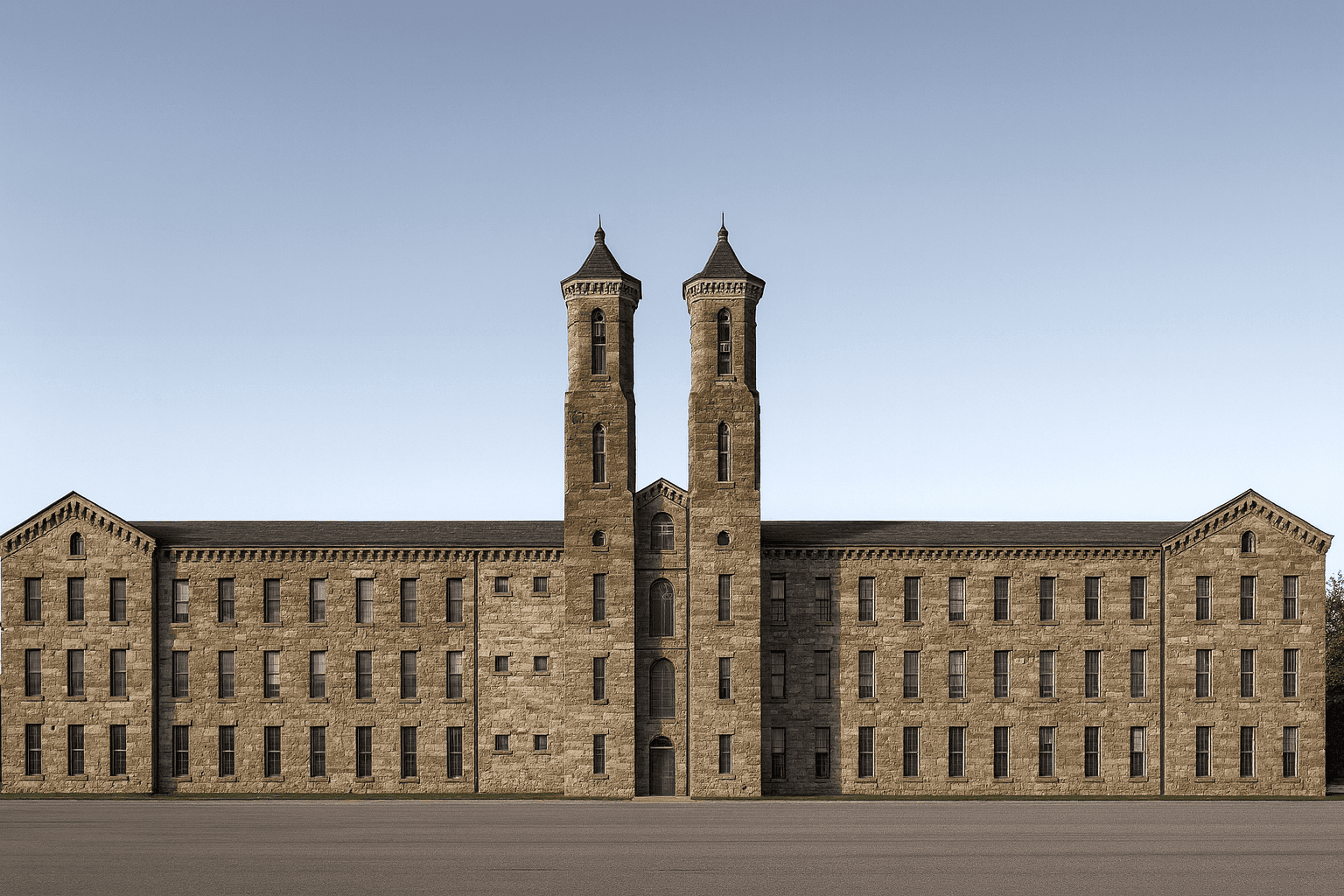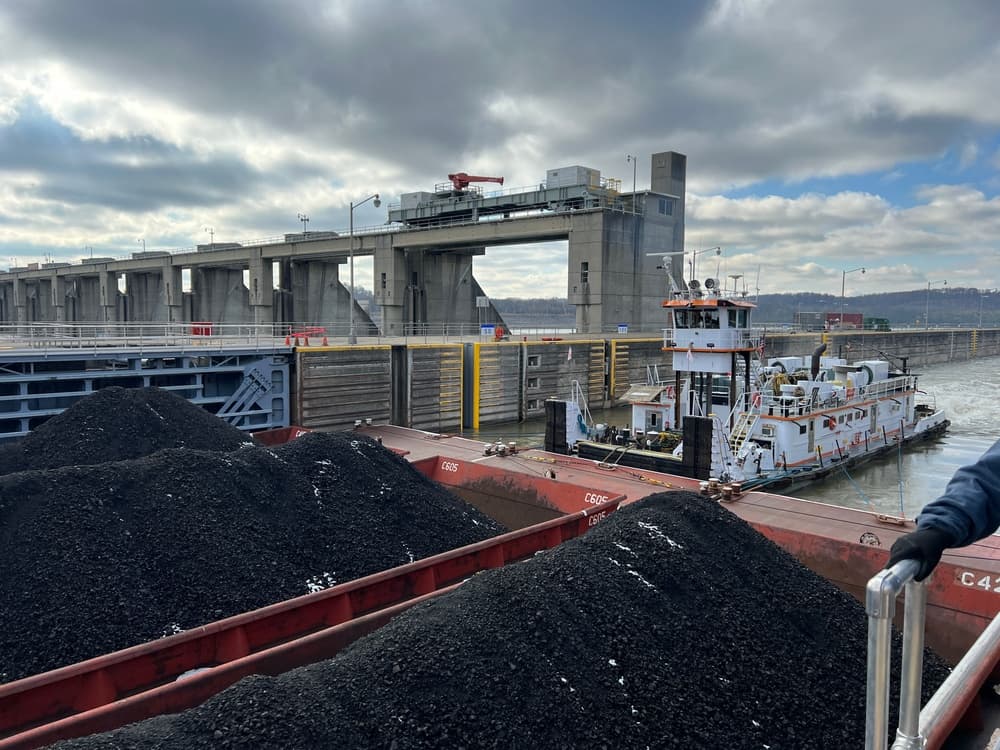From Mill Whistles to Morning Windows – The Cotton Giant That Built Perry County
At first light on the Ohio River, the twin towers of the Cannelton Cotton Mill still frame the water the way shift whistles once framed the day.

At first light on the Ohio River, the twin towers of the Cannelton Cotton Mill still frame the water the way shift whistles once framed the day. A century and a half ago, this sandstone landmark drew workers to Perry County and placed a small river town on the national industrial map. Today, families live inside its restored walls — a daily reminder that heritage can be lived, not only remembered. Built between 1849 and 1851 and designed by Rhode Island architect Thomas A.
Tefft, the mill was an audacious project for a young Midwestern community. It rose directly along the riverfront in Cannelton and was promoted in its era as the largest industrial building west of the Alleghenies. Crucially, it was constructed of native sandstone, not brick, with a long main block and two commanding entrance towers that gave the town a distinct skyline. For generations, the mill anchored local work and identity.
It ran from 1851 until 1954, sending cloth into national markets and shaping daily life in Perry County. After operations ceased, the site received recognition for its importance, added to the National Register of Historic Places in 1975 and named a National Historic Landmark in 1991. Those designations recorded what residents already knew — that the building told a central story about the county. The modern chapter began when local leaders pushed for a second life rather than slow decline.
Lincoln Hills Development Corporation purchased the property in 1999 and led a full preservation and conversion into seventy apartments, an affordable and low-income community that opened in 2003. The project saved an endangered landmark and brought residents back to a riverfront address, now listed as 310 Washington Street. Look closely at the facade and the details still speak. The paired towers rise a little over one hundred feet, one historically used for water storage and fire protection, the other for circulation and work calls.
They still mark time in Cannelton — from the first sun on the Ohio to the evening lights in the windows — proof that a place built for steam and spindles can be adapted to serve a community again.


